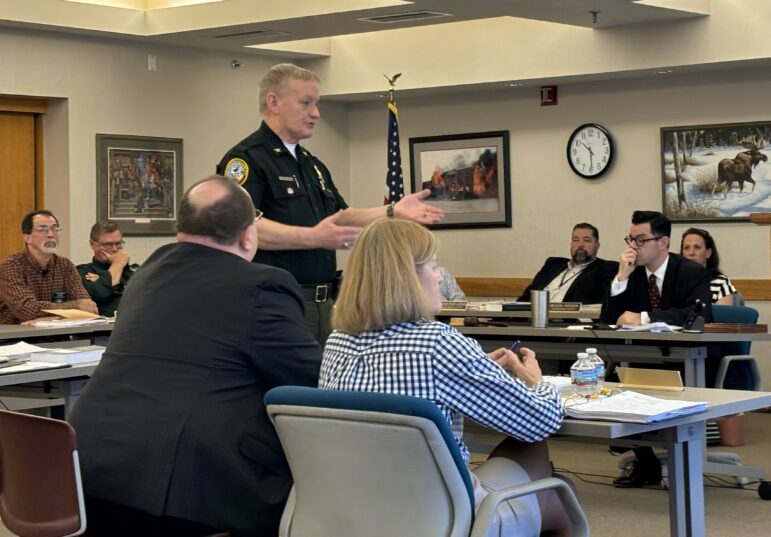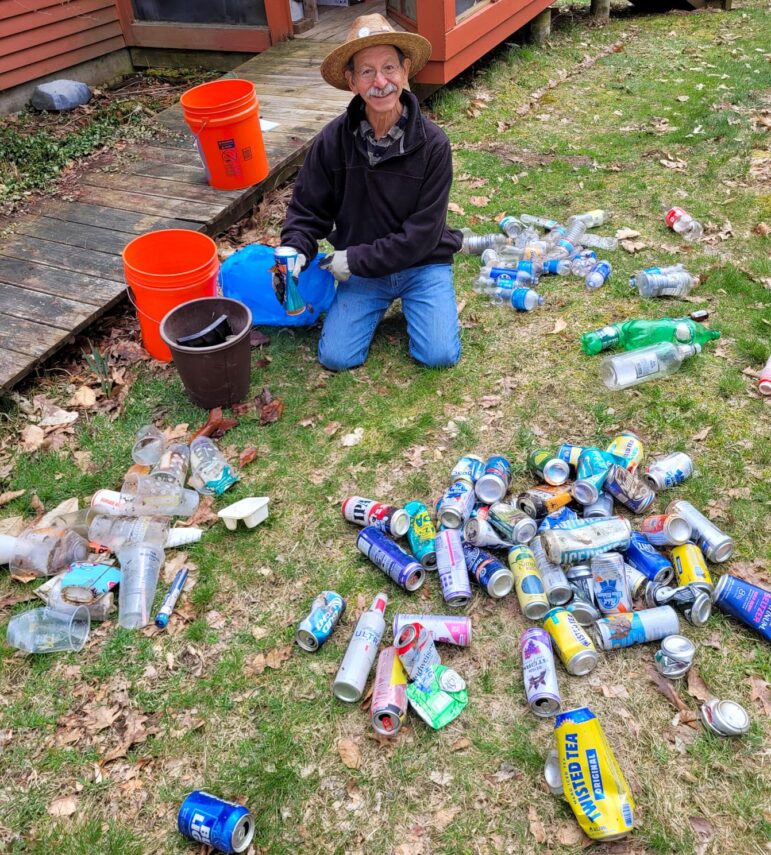By PAUL DOSCHER of Weare
It’s been a hot summer. Just the other day we tied the record for most days over 90 degrees Fahrenheit. Add to that the moderate to severe drought and it’s been a tough summer for farmers, gardeners, and drinking water wells.
When it gets so hot, day after day, most of us can take refuge in a cooler place. Fans and air conditioning make it possible for us humans to avoid the worst impacts of heat when those options are available.
But what’s it like for our non-human co-inhabitants of New Hampshire. More specifically, what’s it like to be a trout?
The Eastern Brook Trout (Salvelinus fontnalis) is our state fish and thrives in our cold clean waters. Cold is really important for Brook Trout. As water warms it can carry less dissolved oxygen, and Brook Trout cannot breathe in water that is above 70 degrees for more than a very short time. When water warms too much, our state fish either has to find colder water or it will perish. Imagine what it might be like if you found yourself in a place too hot to breathe and you couldn’t get away.
What our trout have evolved to do in this situation is to seek out cold springs in the bottom of streams, or they migrate to colder streams, usually farther upstream in their watershed. Research done here in New Hampshire by Fish and Game Department fisheries biologist Dianne Timmins discovered that some brook trout will travel as much as 50 miles to find suitable habitat conditions.
But when we humans have built dams for various utilitarian purposes or installed culverts under roads that make streams impassible for fish, we’ve inadvertently wiped out plenty of populations of trout. When the water downstream heats up too much, and a dam blocks their movement, the fish my not be able to find cold water. Or if they do find cold water they may not be able to move upstream to their spawning beds in smaller streams.
There are tens of thousands of road culverts in our state that have a similar effect. When a culvert under a road is placed so that the outflow end is more than about 18 inches higher than the water level of the stream below, it blocks trout from moving upstream. These so-called “perched” culverts weren’t intended to block fish passage, but that’s what they do.
Hot and dry summers like this and many recent ones are a real threat to our Brook Trout. Scientific studies have suggested that rising temperatures could lead to a 77 percent decline in Brook Trout habitat. That’s on top of the fact that for the past few centuries their habitat has grown smaller and smaller due to urbanization, pollution and fragmentation of their habitat by dams and perched culverts.
Whether you like to fish for trout or not, their presence in a stream is a strong indicator of the condition of the water quality in the watershed. All our communities benefit from clean water and if you have a healthy trout stream you should be pleased and proud.
But will they stay healthy? If we manage to reduce greenhouse gas emissions so that the scientific models predicting continuously hotter and dryer summers don’t come to pass, there is hope for our Brook Trout. We also need to acknowledge that a certain amount of warming climate is ‘baked in’ due to our past emissions and there are important things we must do to help our trout and all the other creatures they live with survive.
In recent years the NH Fish and Game Department, Trout Unlimited, the Nature Conservancy and other groups have dramatically increased the stream reconnection and restoration projects in New Hampshire. Streams have been surveyed, temperatures monitored, fish populations counted. This has led to projects to replace impassible culverts with bridges and new culverts that not only allow fish and other organism passage, but provide for better flood resiliency, so roads don’t wash out as often. There have also been an increasing number of obsolete dam removals, some of which are replaced with ‘rock ramps’ that retain the ponds above but allow the fish to migrate during high water.
If we want to keep robust populations of Brook Trout we have mitigate extreme climate change and adapt to what is inevitable. We must reduce our fossil fuel and methane emissions dramatically. It won’t be quick, but the recent climate action taken by Congress is a strong start, and many states and communities are also leading the way to a low carbon future.
We will also need adaptation, because no matter how quickly we cut emissions we will most certainly see hotter and dryer summers in our future. By removing the impediments for Brook Trout and other cold-water creatures to move to colder water, by helping sustain cold water by keeping trees and when necessary planting trees along stream banks, and by restoring habitat quality we can give our state fish a fighting chance to survive and thrive. Fortunately, both the recent Inflation Reduction and Infrastructure Acts provide significant funding for essential climate adaptation efforts like those needed for our trout streams.
Brook Trout are certainly a sensitive species, but they are also resilient. If we do our best to give them the habitat they need, they will recover and thrive.
Paul Doscher worked for nearly 3 decades at the Society for the Protection of NH Forests, retiring as the vice president for land conservation. He is a national trustee of Trout Unlimited, a board member of the NH Audubon and owns and operates a small farm with his wife in Weare.
The opinions expressed here are those of the author InDepthNH.org welcomes diverse opinion. Email nancywestnews@gmail.com





